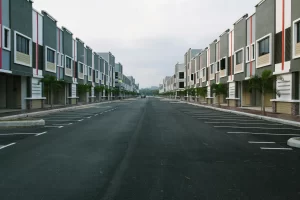Strengthening Foundations: Seismic Retrofitting and Earthquake Preparedness in Southern California
In the dynamic landscape of Southern California, where the beauty of nature coexists with the ever-present threat of earthquakes, ensuring the resilience of our built environment is paramount. Seismic retrofitting and earthquake preparedness have become indispensable aspects of construction in the region. This blog post delves into the significance of foundations retrofitting, explores its methods, and emphasizes the importance of earthquake preparedness in safeguarding our communities.
Understanding the Risk:
Southern California sits atop the infamous San Andreas Fault, making it one of the most seismically active regions in the Los Angeles, Irvine, Santa Fe Springs, Tustin, Newport Coast, Anaheim, Laguna Niguel, Placentia, Long Beach, Corona, Torrance, Huntington Beach, Commerce, Dana Point, San Clemente, City of Industry, Newport Beach CA, Palm Springs, Riverside, California. Recognizing the inherent risk is the first step toward creating structures that can withstand the unpredictable forces of an earthquake.
Seismic Retrofitting Explained:
Seismic retrofitting involves modifying existing structures to enhance their ability to withstand seismic activity. This process addresses vulnerabilities in buildings and infrastructure, making them more resistant to the lateral forces generated during an earthquake. Common retrofitting techniques include adding support structures, reinforcing foundations, and securing building components to minimize damage.
Protecting Heritage Structures:
Southern California boasts a rich architectural heritage, but many older structures may not meet modern seismic safety standards. Retrofitting historic buildings presents a unique challenge, requiring a delicate balance between preserving cultural significance and implementing necessary safety measures. Innovations in retrofitting techniques allow for the protection of these valuable landmarks without compromising their authenticity.
Mandatory Retrofitting Regulations:
Recognizing the seismic risks, California has implemented mandatory retrofitting regulations for certain types of buildings, particularly those with a higher risk of collapse during an earthquake. These regulations aim to proactively strengthen vulnerable structures and reduce the potential for casualties and damage in the event of a seismic event.
Community Engagement in Earthquake Preparedness:
Beyond individual buildings, community-wide earthquake preparedness is crucial. Educating residents on emergency response plans, conducting regular drills, and promoting seismic awareness contribute to a resilient and informed population. Southern California communities are taking proactive steps to ensure that every resident knows what to do before, during, and after an earthquake.
Innovations in Seismic Technology:
Advancements in technology are playing a pivotal role in seismic retrofitting. Engineers and architects are leveraging cutting-edge tools, such as computer simulations and sensors, to assess structural vulnerabilities and implement targeted retrofitting strategies. These innovations not only improve the effectiveness of retrofitting but also contribute to on-going research in earthquake engineering.
Conclusion:
Seismic retrofitting and earthquake preparedness are integral components of Southern California’s commitment to creating a safer and more resilient environment. As the region continues to grow and evolve, the lessons learned from past seismic events guide the implementation of innovative solutions. By fortifying our structures, preserving our heritage, and engaging communities in preparedness efforts, Southern California is not just adapting to its seismic reality but actively building a foundation that can withstand the challenges of the future.





